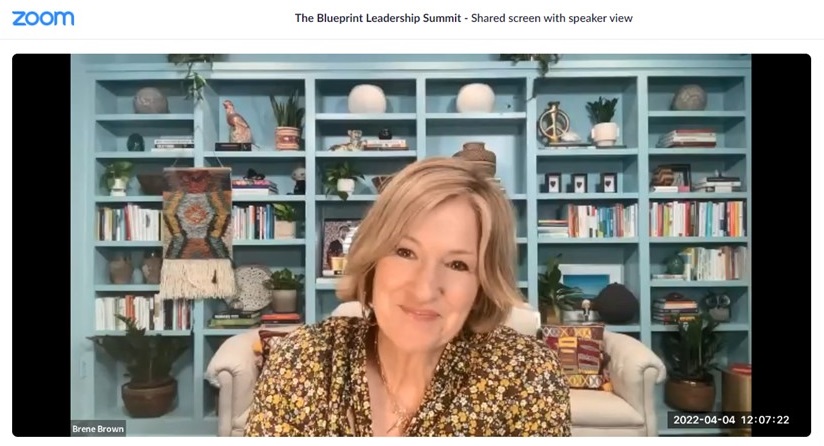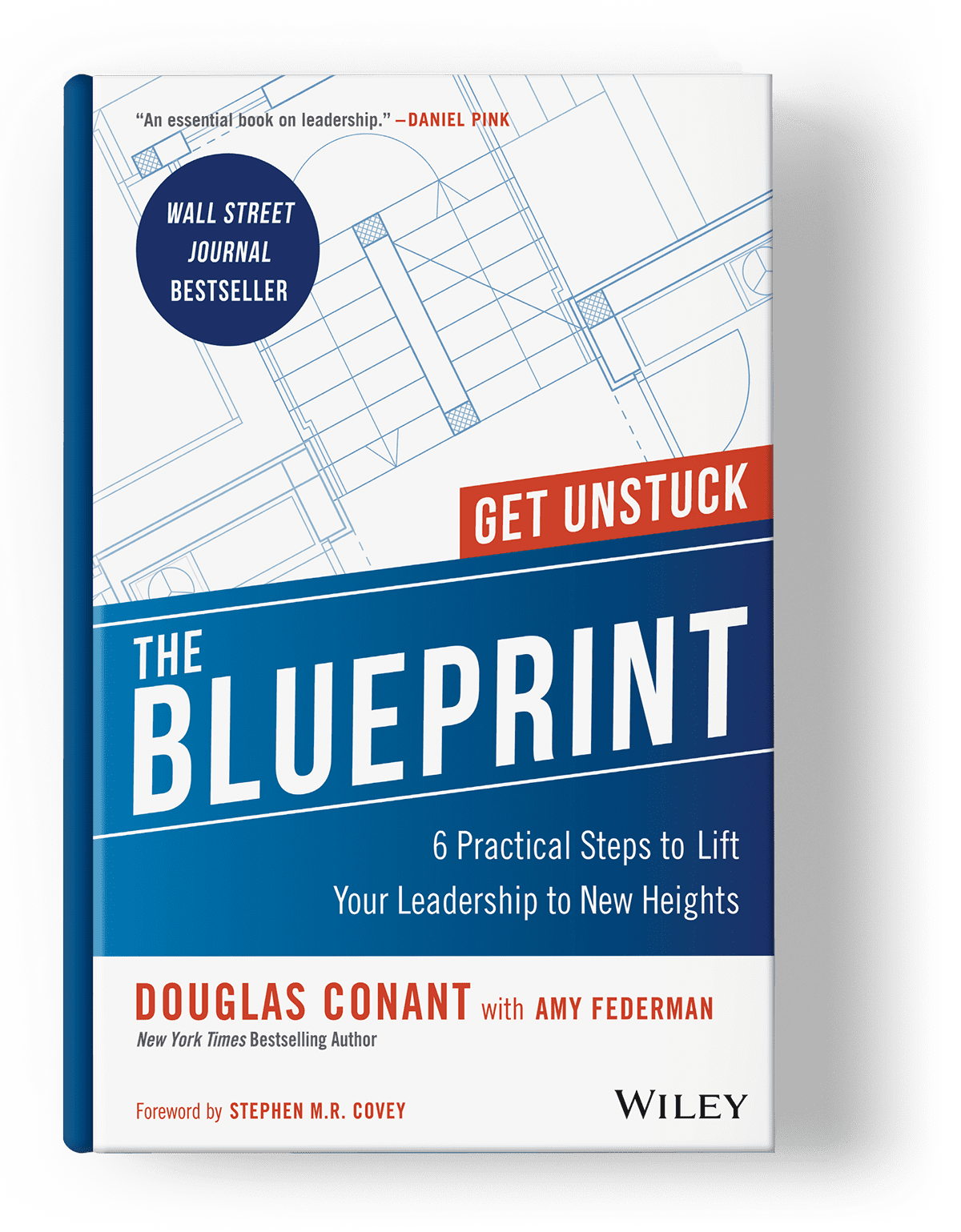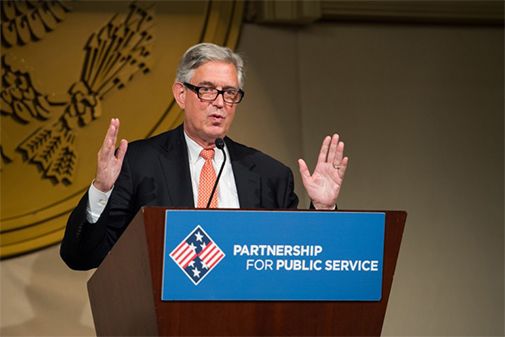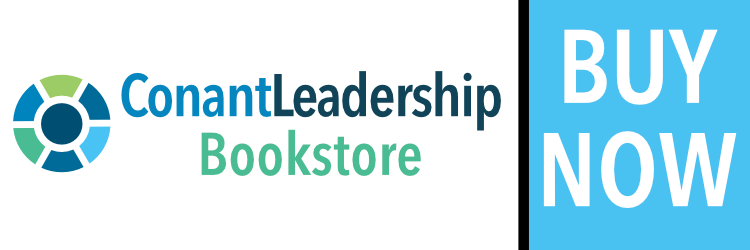‘Empathy Is the Secret Source of Connection’—Brené Brown and Doug Conant on Leadership in the Post-Pandemic Era
Last week, at ConantLeadership’s third bi-annual BLUEPRINT Leadership Summit, a free meeting of the top leadership minds in the business space, ConantLeadership Founder & CEO Doug Conant was joined in conversation by celebrated thinker and storyteller, Brené Brown, research professor at the University of Houston, author of six #1 New York Times bestsellers including her new book Atlas of the Heart, and host of the acclaimed weekly Spotify Original podcasts Unlocking Us and Dare to Lead.
I was honored to moderate the session and was struck in particular by the following powerful tips from their conversation. Enjoy these actionable insights on leading with empathy in an era marked by converging crises and paradigm shifts in the world of work. In the long shadow of a pandemic that has upended human life worldwide, people are crying out for connection and understanding. Brené and Doug help guide the way.
 (You can watch the full video of this summit session here. To skip intros and housekeeping, fast forward to minute 07:10.)
(You can watch the full video of this summit session here. To skip intros and housekeeping, fast forward to minute 07:10.)
Now More than Ever, You Must Forge Connection
Doug Conant, a leadership veteran with over 45 years of experience including in the Fortune 500 where he led a ten-year turnaround of Campbell Soup Company as CEO, has always championed a “people first” approach to leading organizations. But today, his long-held motto, “To win in the marketplace, you must first win in the workplace,” holds even deeper resonance.
Millions of people left their jobs last year in what’s been widely dubbed ‘The Great Resignation.’ And a collective backlash against the command-and-control model of leadership that reigned supreme in previous decades is palpable. Everyone agrees: The world has changed.
Brené Brown, a renowned researcher and author who’s worked with dozens of organizations and countless leaders, explains that the research shows employees aren’t leaving their jobs, they’re fleeing “toxic culture.” And, she adds, they don’t just leave a culture, “they leave a manager.” More now than ever, workers expect more from their leaders. To attract and retain talent, you have to be exquisitely tuned in to people’s temperament and well-being.
Doug observes this new expectation is a challenge, yes, but it’s also “a beautiful opportunity for leaders to really show up . . . to create the conditions where the people you’re working with feel you have their back and that you genuinely care.”
The key to demonstrating the genuine caring that Doug advocates? Brené says empathy is essential. She offers some important texture: “Neurobiologically, we are hardwired to be in connection with each other. In the absence of connection, there is always suffering.” And her research findings show, “that we have to care for and be connected to the people we lead in order to be effective.” The way to take action on these findings, and embody a ‘people first’ leadership ethos, is to understand that “empathy is the secret source of connection; it is what fuels connection.”
Don’t Worry, Empathy Is Teachable
If empathy is the recipe for forging the connections that are fundamental to effective leadership, how can leaders develop the skill—especially if it doesn’t come naturally? Brené reassures leaders that empathy, like a lot of competencies, can be practiced: “It’s a teachable skill set. It’s not something that you either have or you don’t.”
The first step to unlocking a greater understanding of empathy is rethinking what it looks like. Brené clarifies that being empathetic is not about “walking in the shoes of other people.” Rather, as leaders, “our job is that when people tell us the experience of being in their shoes, we believe them—even when it’s different from our lived experience.”
To illustrate the point, Brené shares a role-play featured in Atlas of the Heart between a white manager and a Black employee. The employee had worked for months on a presentation and had aced it, but when she was finished, no one made eye contact with her or asked her any questions; in fact, the only comments were directed to white men in the room who hadn’t even worked on the presentation. She felt invisible. When the Black employee shared this with her white manager, the manager’s first instinct was to be dismissive, to imply that she was being too sensitive, and to want to move on without engaging with what was being shared.
There was an opportunity here to instead meet the employee with empathy, to validate her e.g., “Let me believe the experience you had, even when I can’t reconcile it with my own experience.” Instead of shutting her employee down, a better path would be for the manager to get curious, ask questions, and use the interaction to deepen connection and offer support.
Doug adds that “leading by listening,” is a crucial component to practicing empathy in interactions like this. When people come to you with issues, he advises that you don’t listen “passively,” or jump in with “a quick response.” Instead, request more details, “listen carefully, and then engage, as opposed to merely replying.”
To sharpen the empathy saw, Doug encourages managers to take conversations “one level deeper than you normally would,” to amplify mutual understanding. This approach can help you avoid what Brené calls “empathic failure,” like with the white manager doing a “narrative takeover,” imposing her own perceptions onto her employee’s lived experience. She explains that this kind of takeover is rooted in a desire to alleviate discomfort and the message it conveys to your stakeholders is: “My comfort is more important that being with you in this moment.” When you overly center yourself, it can override your ability to honor the other person, and sever the possibility for connection.
Get Comfortable with Discomfort
Building on what constitutes an “empathic fail,” Brené also celebrates what success looks like: “A leader’s tolerance for discomfort is a huge indicator of their capacity for courage and empathy.” The more you’re able to sit with hard feelings, the more fully you can show up for yourself and others. Getting started can be as simple as noticing when you’re inclined to shut down, taking a deep breath, and thinking to yourself, “This moment is uncomfortable but I’m going to choose to stay in it. I’m not going to tap out.”
Doug has observed that leaders’ reticence to expose themselves to emotional discomfort comes partially from an over-emphasis on tasks: “They’re struggling to manage the task but are overlooking the people actually doing the work,” which leads to failure because workers won’t “care about the company’s agenda until it’s clear the company cares about them as individuals.” Unfortunately, leaders, awash in a sea of to-dos, are missing opportunities to substantively engage with employees, because they are wary of the discomfort—and distraction—of managing human emotions.
Doug says some managers don’t want to ask team members how they’re doing because “they’re afraid to find out.” And they know if they ask, they’re committed to dealing with potential turmoil and emotional pain. But Doug and Brené are unanimous in their conviction that it’s the topics leaders fear most that they should embrace more courageously. And, in the current environment, a willingness to engage with hot topics like the mental health fallout from the pandemic is fast becoming less of a should-do, and more of a must-do.
As Brené says succinctly: “People are not OK right now, across the board. People are not OK.” So leaders must acknowledge this reality and normalize having uncomfortable conversations. If you don’t know where to start, she shares one manageable practice that can get the ball rolling, called the “two-word check-in.”
Here’s how it works:
- Check-in first. The next time you’re in a meeting on Zoom or Teams, or in-person, just carve out five minutes at the outset to prompt each participant to share two “emotion words,” that describe how they’re feeling.
- Move on. After the exercise, you can get on with the meeting, tackle your agenda, and connect about tasks without allowing the two-word exercise to dominate the conversation.
- Follow up. Use the two-word exercise as a platform for following-up with employees who might be struggling. For example, if one team member shared that they were “overwhelmed and anxious,” reach out to them later in the day to acknowledge, “Hey you said you were overwhelmed so I’m checking in.”
- Ask, Don’t Assume. Rather than trying to jump in as a problem-solver or assume what is needed to solve their pain, practice using this question to ask how you can be helpful: “What does support from me look like right now?” They may not be ready to answer in the moment but encourage them to think about it and tell you what they need. When the other party does share, make sure to act on the request.
Doug agrees that seeking out practices like the two-word check-in that set the table for deeper connection is the smart way to improve your leadership outcomes in the pandemic era. And he stresses that insights gleaned from the pursuit of more empathic interactions must be followed up with concrete measures that improve conditions for your stakeholders. Empathy without action is insufficient if you want to maintain credibility.
Overall, Doug says, it’s simple: “If you attend to the emotional nature of the folks you’re working with, they’re much more likely to attend to the nature of the work.”
Brené frames it similarly: “We either spend a reasonable amount of time as leaders attending to the fears and feelings of people we lead, or we will spend an unreasonable amount of time managing really problematic behaviors and crises.” To both panelists the choice is clear: People first.
 About the Author: Amy Federman is ConantLeadership’s Director of Content and Editor in Chief and co-author with Doug Conant of the WSJ bestseller, The Blueprint.
About the Author: Amy Federman is ConantLeadership’s Director of Content and Editor in Chief and co-author with Doug Conant of the WSJ bestseller, The Blueprint.
Enjoyed these insights? Watch the full video recording of this summit session for a rich discussion on empathy and courage, and a deeper exploration of vulnerability, strength, and more.
For more advice from our panelists, read Brené Brown’s new book, Atlas of the Heart, and explore her multiple other #1 NYT bestsellers, engage with our suite of written leadership resources here, or start your Blueprint journey by getting your signed copy of the book here. And, you can enjoy our library of previous summits’ sessions here, including conversations with Indra Nooyi, Amy Edmondson, Bill George, and many more.
Ready to step into your full leadership potential? Apply to our signature leadership development program, The BLUEPRINT Boot Camp by ConantLeadership, a 2-day leadership intensive offering elite level, highly interactive training with Doug Conant and a community of your peers. Learn more about this premium tier of transformational leadership development here or set up a complimentary consultation call here.
(Photo by Nicola Fioravanti on Unsplash)

“Doug Conant is remarkable—and so is this work.“
– Stephen M. R. Covey
Author of The Speed of Trust

The Blueprint
6 Practical Steps to Lift Your Leadership to New Heights
By Douglas Conant with Amy Federman

Have Doug Speak at Your Event
Doug works collaboratively with event organizers to customize his material for each audience.



0 Comments